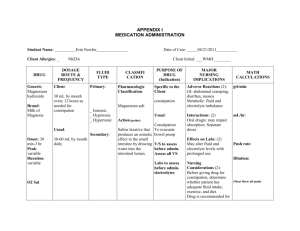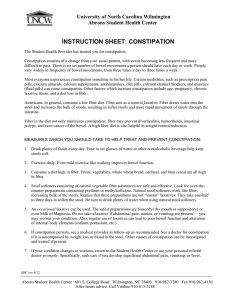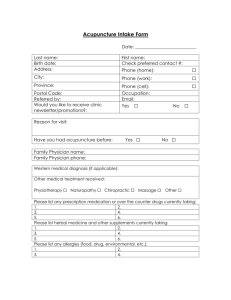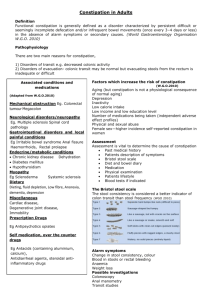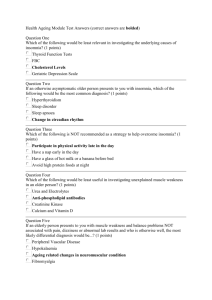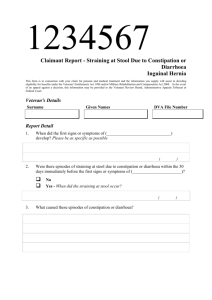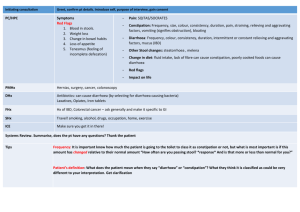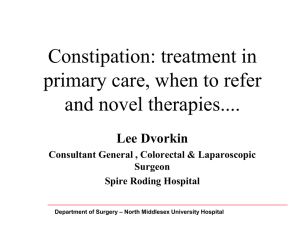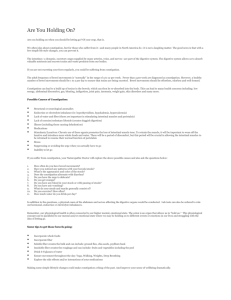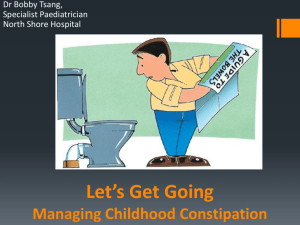Constipation (Teenagers)
advertisement
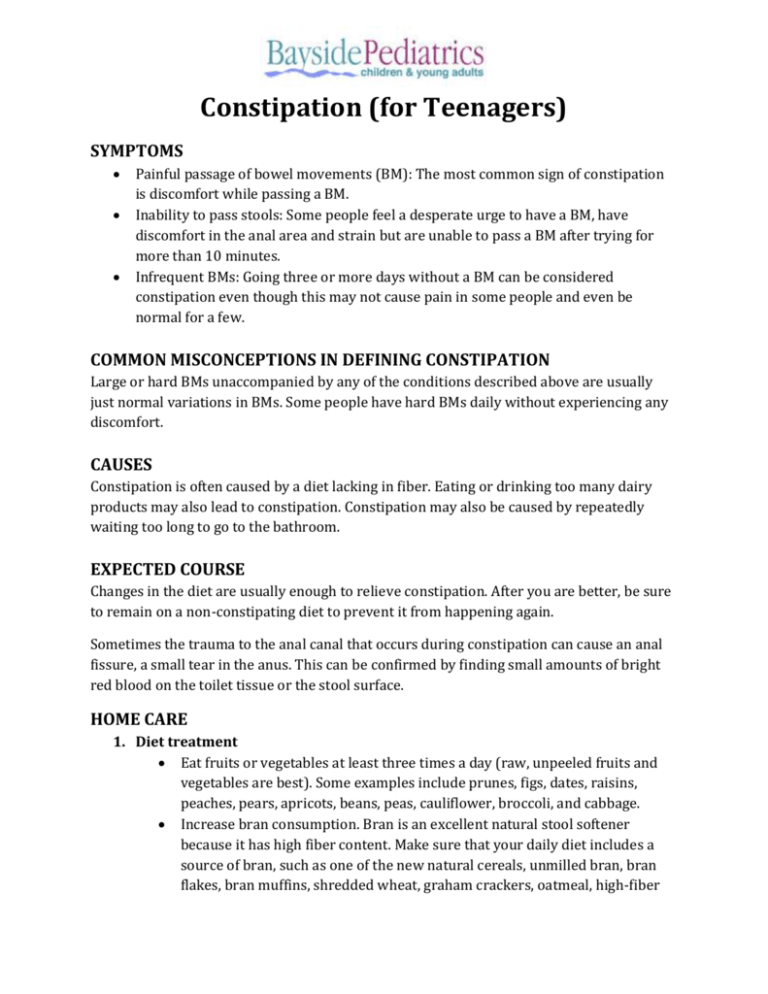
Constipation (for Teenagers) SYMPTOMS Painful passage of bowel movements (BM): The most common sign of constipation is discomfort while passing a BM. Inability to pass stools: Some people feel a desperate urge to have a BM, have discomfort in the anal area and strain but are unable to pass a BM after trying for more than 10 minutes. Infrequent BMs: Going three or more days without a BM can be considered constipation even though this may not cause pain in some people and even be normal for a few. COMMON MISCONCEPTIONS IN DEFINING CONSTIPATION Large or hard BMs unaccompanied by any of the conditions described above are usually just normal variations in BMs. Some people have hard BMs daily without experiencing any discomfort. CAUSES Constipation is often caused by a diet lacking in fiber. Eating or drinking too many dairy products may also lead to constipation. Constipation may also be caused by repeatedly waiting too long to go to the bathroom. EXPECTED COURSE Changes in the diet are usually enough to relieve constipation. After you are better, be sure to remain on a non-constipating diet to prevent it from happening again. Sometimes the trauma to the anal canal that occurs during constipation can cause an anal fissure, a small tear in the anus. This can be confirmed by finding small amounts of bright red blood on the toilet tissue or the stool surface. HOME CARE 1. Diet treatment Eat fruits or vegetables at least three times a day (raw, unpeeled fruits and vegetables are best). Some examples include prunes, figs, dates, raisins, peaches, pears, apricots, beans, peas, cauliflower, broccoli, and cabbage. Increase bran consumption. Bran is an excellent natural stool softener because it has high fiber content. Make sure that your daily diet includes a source of bran, such as one of the new natural cereals, unmilled bran, bran flakes, bran muffins, shredded wheat, graham crackers, oatmeal, high-fiber cookies, brown rice, or whole wheat bread. Popcorn is one of the best highfiber foods. Eat fewer constipating foods, such as dairy products and cooked carrots. Increase the amount of water you drink each day. 2. Stool softeners If a change in diet does not relieve your constipation, take a stool softener with dinner every night for one week. Stool softeners (unlike laxatives) are not habitforming. They work for 8 to 12 hours after being taken. Some stool softeners that you can buy at your local drugstore without a prescription are Haley’s M-O (1 tablespoon), Metamucil or Citrucel (1 tablespoon), and mineral oil (1 tablespoon). If you have acute rectal pain and need immediate relieve, try taking one or more glycerin suppositories. 3. Common mistakes in treating constipation Do not use enemas without your physician’s advice. These can cause irritation or fissures (tears) of the anus f used excessively. Do not use strong oral laxatives without asking your physician either, as they can cause cramps and may become habit-forming. CALL YOUR PHYSICIAN IMMEDIATELY IF: You develop severe rectal or abdominal pain. CALL YOUR PHYSICIAN DURING OFFICE HOURS IF: You do not have a bowel movement after three day son a non-constipating diet. You have other questions or concerns.
